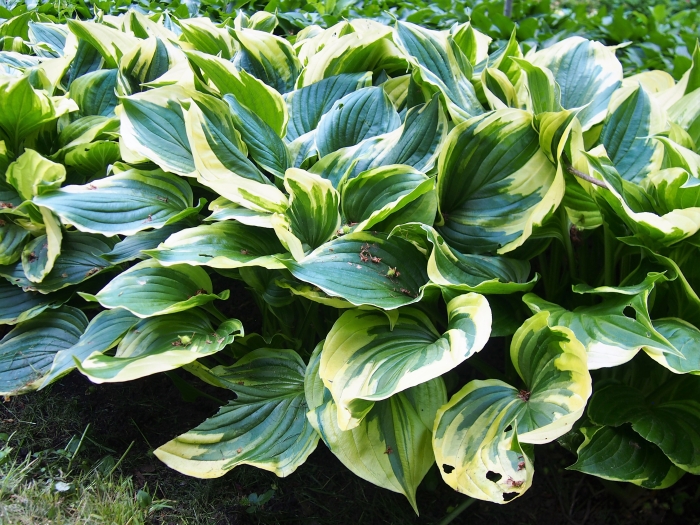Blue Plantain Lily
(Hosta ventricosa)
Blue Plantain Lily (Hosta ventricosa)
/
/

Agnieszka Kwiecień, Nova
CC BY-SA 4.0
Image By:
Agnieszka Kwiecień, Nova
Recorded By:
Copyright:
CC BY-SA 4.0
Copyright Notice:
Photo by: Agnieszka Kwiecień, Nova | License Type: CC BY-SA 4.0 | License URL: https://creativecommons.org/licenses/by-sa/4.0 | Uploader: Nova | Publisher: Wikimedia Commons | Title: Hosta_ventricosa_'Aureomarginata'_Funkia_rozdęta_2019-06-01_01.jpg | Notes: Cross-wiki upload from en.wikipedia.org |





























Estimated Native Range
Summary
Hosta ventricosa, commonly known as Blue Plantain Lily, is a herbaceous perennial plant native to open woodlands and forest edges in southeast and south-central China. It has naturalized in some parts of the eastern United States. This Hosta species typically grows to a height of 18-24 inches (45-60 cm) with a similar spread. The Blue Plantain Lily is characterized by its broad, heart-shaped, blue-green leaves that form a dense, mound-like clump. During the summer, it produces bell-shaped, deep purple flowers on tall scapes, which are moderately showy and attract pollinators such as bees.
Blue Plantain Lily is valued for its lush foliage and shade tolerance, making it a popular choice for ground cover in woodland gardens, shaded borders, and as an underplanting for larger shrubs or trees. It thrives in moist, well-drained soil with high organic content and prefers part shade to full shade conditions. While it is generally low maintenance, it requires consistent moisture and can be susceptible to slugs and snails. Hosta ventricosa is also known for its unique reproductive strategy, pseudogamous apomixis, which allows it to produce genetically identical seeds without fertilization, leading to uniform offspring and making it a stable cultivar for gardeners.CC BY-SA 4.0
Blue Plantain Lily is valued for its lush foliage and shade tolerance, making it a popular choice for ground cover in woodland gardens, shaded borders, and as an underplanting for larger shrubs or trees. It thrives in moist, well-drained soil with high organic content and prefers part shade to full shade conditions. While it is generally low maintenance, it requires consistent moisture and can be susceptible to slugs and snails. Hosta ventricosa is also known for its unique reproductive strategy, pseudogamous apomixis, which allows it to produce genetically identical seeds without fertilization, leading to uniform offspring and making it a stable cultivar for gardeners.CC BY-SA 4.0
Plant Description
- Plant Type: Herb
- Height: 1.5-2 feet
- Width: 2-3 feet
- Growth Rate: Moderate
- Flower Color: Purple
- Flowering Season: Summer
- Leaf Retention: Deciduous
Growth Requirements
- Sun: Part Shade, Full Shade
- Water: Medium
- Drainage: Medium
Common Uses
Border Plant, Groundcover, Low Maintenance, Potted Plant
Natural Habitat
Native to open woodlands and forest edges in southeast and south-central China
Other Names
Common Names: Blue Plantain Lily
Scientific Names: Hosta ventricosa , ? coerulea , Bryocles ventricosa , Funkia caerulea , Funkia lanceolata , Funkia lanceolata , Funkia latifolia , Funkia latifolia subsp. aureomaculata , Funkia latifolia subsp. maculata , Funkia marginata
GBIF Accepted Name: